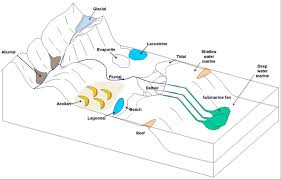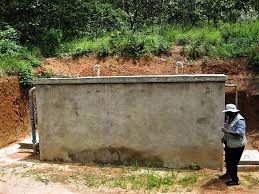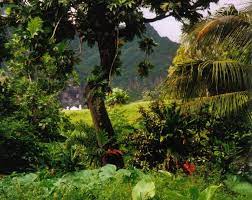Meaning and Factors affecting Sedimentation in Waste-water Treatment
Sedimentation processis the main process of primary treatment which comes up immediately after screening, use of comminutor and grit removal processes. Just as we have primary sedimentation which is the main focus for now, we also have final sedimentation which comes up during secondary treatment, that will equally be discussed but in the later part of this section. A closer look at the meaning of sedimentation will, for now, suffice.
Meaning of Sedimentation
Sedimentation (primary) by way of definition is the process of letting suspended material settle by gravity. Suspended material may be particles, such as clay or silts, originally present in the water or waste- water sources.
Sedimentation is accomplished by decreasing the velocity of the water or waste-water being treated to a point below which the particles will no longer remain in suspension. When the velocity no longer supports the transport of the particles, gravity will remove them from the flow.
Factors affecting Sedimentation
Several factors affect the separation of settleable solids from water or waste-water. Some of the more common types of factors to consider are:
1. Particle Size
The size and type of particles to be removed have a significant effect on the operation of the sedimentation tank. Because of their density, sand or silt can be removed very easily.
The velocity of the water-flow channel can be slowed to less than one foot per second, and most of the gravel and grit will be removed by simple gravitational forces.
In contrast, colloidal material, small particles that stay in suspension and make the water seem cloudy, will not settle until the material is coagulated and flocculated by the addition of a chemical, such as an iron salt or aluminum sulfate.
The shape of the particle also affects its settling characteristics. A round particle, for example, will settle much more readily than a particle that has ragged or irregular edges.

All particles tend to have a slight electrical charge. Particles with the same charge tend to repel each other. This repelling action keeps the particles from congregating into flocs and settling.
2. Water Temperature
Another factor to consider in the operation of a sedimentation basin is the temperature of the water being treated. When the temperature decreases, the rate of settling becomes slower.
The result is that as the water cools, the detention time in the sedimentation tanks must increase. As the temperature decreases, the operator must make changes to the coagulant dosage to compensate for the decreased settling rate.
In most cases temperature does not have a significant effect on treatment. A water treatment plant has the highest flow demand in the summer when the temperatures are the highest and the settling rates the best.
When the water is colder, the flow in the plant is at its lowest and, in most cases, the detention time in the plant is increased so the floc has time to settle out in the sedimentation basins.
3. Currents
Several types of water currents may occur in the sedimentation basin:
Density currents caused by the weight of the solids in the tank, the concentration of solids and temperature of the water in the tank.
Eddy currents produced by the flow of the water coming into the tank and leaving the tank.
The currents can be beneficial in that they promote flocculation of the particles. However, water currents also tend to distribute the floc unevenly throughout the tank; as a result, it does not settle out at an even rate.
Read Also : Guiding Principles of Integrated Biomedical Waste Management
Some of the water current problems can be reduced by the proper design of the tank. Installation of baffles helps prevent currents from short circuiting the tank
4. Sedimentation Basin Zones
Under ideal conditions, the sedimentation tank would be filled with the water that has been coagulated, and the floc would be allowed to settle before any additional water is added. That is not possible for most types of water treatment plants.
Most sedimentation tanks are divided into these separate zones:
1. Inlet Zone
The inlet or influent zone should provide a smooth transition from the flocculation zone and should distribute the flow uniformly across the inlet to the tank. The normal design includes baffles that gently spread the flow across the total inlet of the tank and prevent short circuiting in the tank.
(Short circuiting is the term used for a situation in which part of the influent water exits the tank too quickly, sometimes by flowing across the top or along the bottom of the tank.) The baffle could include a wall across the inlet, perforated with holes across the width of the tank.
2. Settling Zone
The settling zone is the largest portion of the sedimentation basin. This zone provides the calm area necessary for the suspended particles to settle.
3. Sludge Zone
The sludge zone, located at the bottom of the tank, provides a storage area for the sludge before it is removed for additional treatment or disposal. Basin inlets should be designed to minimize high flow velocities near the bottom of the tank.
If high flow velocities are allowed to enter the sludge zone, the sludge could be swept up and out of the tank. Sludge is removed for further treatment from the sludge zone by scraper or vacuum devices which move along the bottom.
4. Outlet Zone
The basin outlet zone or launder should provide a smooth transition from the sedimentation zone to the outlet from the tank. This area of the tank also controls the depth of water in the basin.
Read Also: Effects of Biomedical Waste on Health
Weirs set at the end of the tank control the overflow rate and prevent the solids from rising to the weirs and leaving the tank before they settle out. The tank needs enough weir length to control the overflow rate, which should not exceed 20,000 gallons per day per foot of weir.



